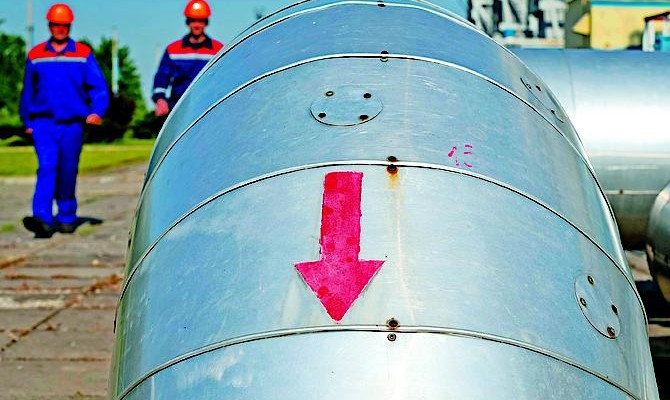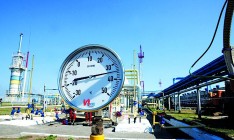Economy
problemAs it turns out, the main enemy of Ukrainian gas pipelines is not terrorists, rather time

Last Tuesday there was another accident in the Ukrainian gas transit system (GTS). The following day the government accused terrorists for this accident and instructed the reinforcement of defense of the pipeline. That said, prior to the aggravation of the situation with the country supplying Ukraine with gas the GTS had exploded on several occasions and Governor of the Poltava Oblast Viktor Bukaichuk affirmed that the stretch of the pipeline where the accident occurred has been in poor condition for at least two years and Naftogas Ukrainy was informed about this several times.
For this reason, experts blame Ukrainian gas transport companies and their senior management of the GTS for negligence and poor judgment that continues to defer the modernization of pipelines.
The Russian company Gazprom also stated that the accident on Tuesday in the Ukrainian GTS was a result of the dilapidated system. “We invested serious funds in the reconstruction of our gas transport system, which cannot be said about the Ukrainian system. The pipes are aging. As a result, many accidents happen. I think that there will be more accidents because the system must be supported in a normal condition. The aging of pipelines is inevitable,” said Vice Chairman of the Board of Gazprom Vitaliy Markelov.
Emergency situation of a continental scale
On June 17 in the Lokhvytskiy County (Poltava Oblast) the hermetic unsealing of one of the sections of the Urengoy-Pomary-Uzhgorod pipeline led to an explosion and a fire that burned for two hours with flames as high as 200 meters.
As a result of the explosion and fire in the pipeline around 10 mn cubic meters of natural gas were emitted into the atmosphere. A few hours after the accident Ukraine’s Minister of Internal Affairs Arsen Avakov stated that the cause was an act of terrorism. Yesterday the minister specified that the cause of the accident could have been due to an explosive placed under the main concrete footing of the gas pipeline.
This is not the first accident in the gas pipeline this year. On May 12, during the process of attempts to stop the leakage of gas from the pipeline in the Ivano-Frankivsk oblast there was an explosion in the Bohorodchany-Dolyna pipeline 30 meters away. The Prosecutor General’s Office also called the accident an act of terrorism and law enforcement bodies promised to reinforce defense of the gas pipelines.
Superstar gas pipeline
The Urengoy-Pomary-Uzhgorod pipeline is the composite part of the Ukrainian GTS of which the gas pipelines Progress and Soyuz are a part of. All of them were built more than 20 years ago. In the opinion of Vice Chairman of the Energy Strategy Fund Dmytro Marynych, despite the fact that the operator of Ukraine’s GTS Ukrtransgas periodically replaces infrastructure of gas pipelines and their functionality is acceptable, the Urengoy-Pomary-Uzhgorod pipeline is the most problematic. “There were two accidents in this pipeline in 2010 similar to the accident in the Poltava oblast,” the expert reminded.
Marynych said of all the pipes that require replacement in the pipe mains in Ukraine, most were in the Urengoy-Pomary-Uzhgorod pipeline, built in 1983. Over the past year alone the Cabinet of Ministers approved two projects for its modernization: in 2014 the 19 km section at the cost of UAH 477.4 mn and last September – a 10 km section at the cost of UAH 187.1 mn. The modernization of the Urengoy-Pomary-Uzhgorod gas pipeline should have been the first stage of the fundamental modernization of Ukraine’s GTS, the plan for which was announced by the government in the summer of 2011.
Sluggish modernization
The Ukrainian government has been talking about the need for modernization and renovation of its GTS for years. Former president Leonid Kuchma even initiated a trilateral consortium between Ukraine, Russia and the EU, which should have engaged in the modernization and operation of Ukraine’s gas pipelines.
Since that time there have been three presidents, but the problem of improving the reliability of the gas pipelines remains unresolved. In 2011, the reconstruction of the Urengoy-Pomary-Uzhgorod gas pipeline was declared envisaging investments to the tune of US $519 mn. However, as Marynych pointed out this project was never launched as Ukraine did not renew cooperation with the International Monetary Fund and failed to restructure Naftogas Ukrainy. In short, this restructuring has not been implemented to this day.
Today, attracting investments for this project will be much more problematic. Earlier, partner of the RusEnergy consulting agency Mikhail Krutikhin noted in a conversation with Capital that the financial status of Naftogas Ukrainy and Ukrtransgas are today not the most favorable for attracting financing. “In order to compensate the money invested stabilization of the financial status of Naftogas Ukrainy and Ukrtransgas is imperative. In the current climate I cannot name any company that would agree to invest money into the modernization of the GTS,” he noted.
Money… it’s a gas
The cost of modernization of Ukraine’s GTS that was mentioned earlier on several occasions may not be realistic since this figure should be strictly tied to the volume of transit: the lower the quantity of transit gas, the lower the profits from transit services and, accordingly, the lower are the chances of investments into such a project.
Meanwhile, Russia’s Gazprom is successively reducing its volumes of gas transit through the territory of Ukraine. Indeed, in 2013 gas transit was 86 bn cu m. In 2014, Gazprom announced the pumping of 70 bn cu m of gas.






 of the agreement of syndication with Financial Times Limited are strictly prohibited. Use of materials which refers to France-Presse, Reuters, Interfax-Ukraine, Ukrainian News, UNIAN agencies is strictly prohibited. Materials marked
of the agreement of syndication with Financial Times Limited are strictly prohibited. Use of materials which refers to France-Presse, Reuters, Interfax-Ukraine, Ukrainian News, UNIAN agencies is strictly prohibited. Materials marked  are published as advertisements.
are published as advertisements.